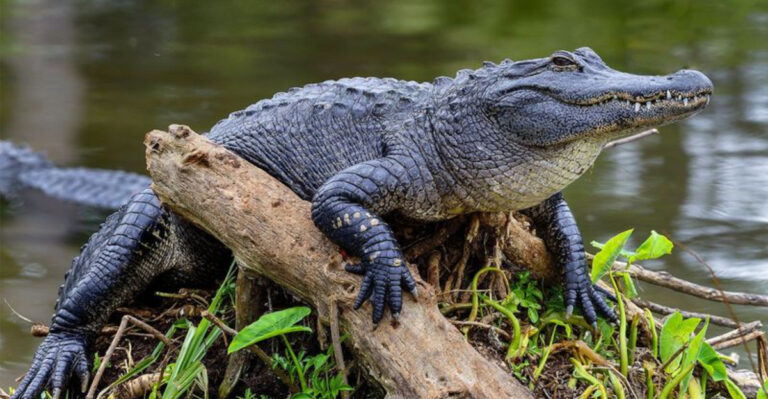15 Of The Largest Bats You Have To See To Believe
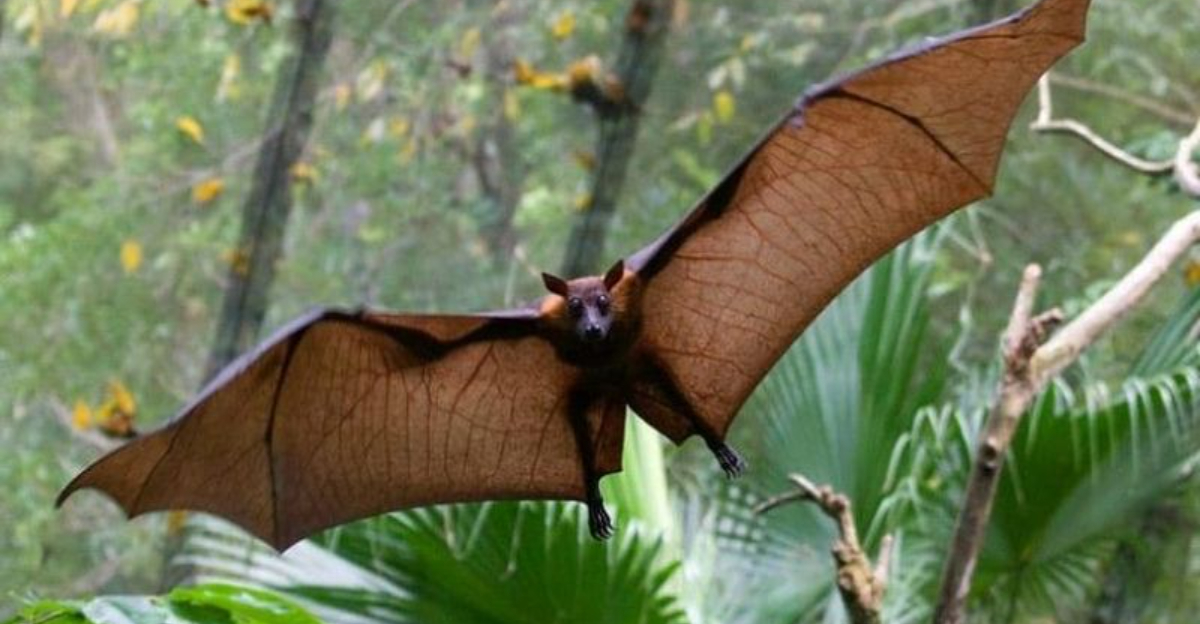
Bats often conjure images of tiny flying creatures darting through the night sky. But some bat species are absolute giants of the sky, with wingspans that would make birds jealous!
These mega-bats aren’t just impressive in size – they play crucial roles in their ecosystems as pollinators and seed dispersers. Let’s explore the biggest bats on our planet that truly need to be seen to be believed.
1. The Flying Fox Champion
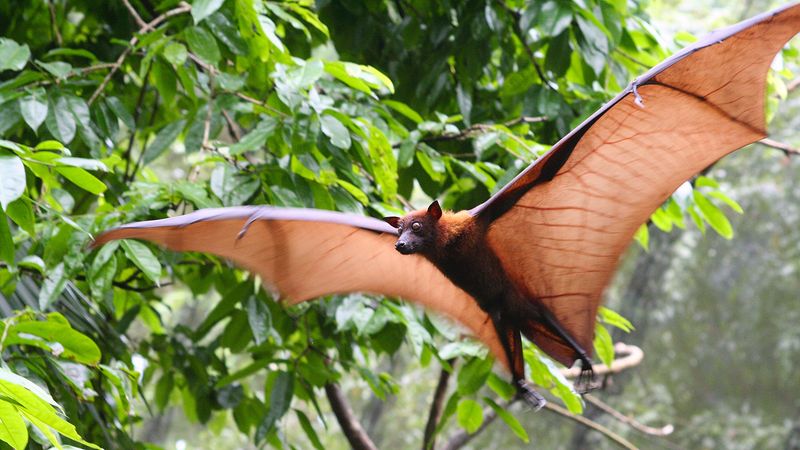
Imagine spreading your arms and still not matching this creature’s wingspan! The Giant Golden-crowned Flying Fox can stretch an incredible 5.6 feet wing-to-wing, making it the undisputed heavyweight champion of the bat world.
Native to the Philippines, these gentle giants feast exclusively on fruits and have sadly become endangered due to hunting and habitat loss. Despite their intimidating size, they’re completely harmless to humans.
2. Island Giants of Indonesia
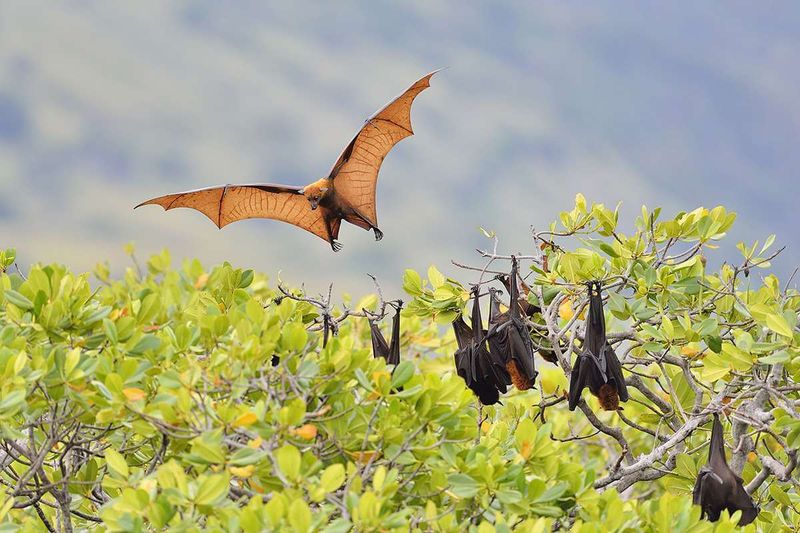
Weighing up to 3.5 pounds – heavier than some house cats – the Large Flying Fox dominates the night skies across Indonesia. Their impressive 5-foot wingspan helps them travel up to 30 miles nightly in search of their favorite fruits.
Farmers often see them as pests, but these magnificent animals actually help regenerate forests by dispersing seeds across vast distances.
3. Australia’s Night Gardeners
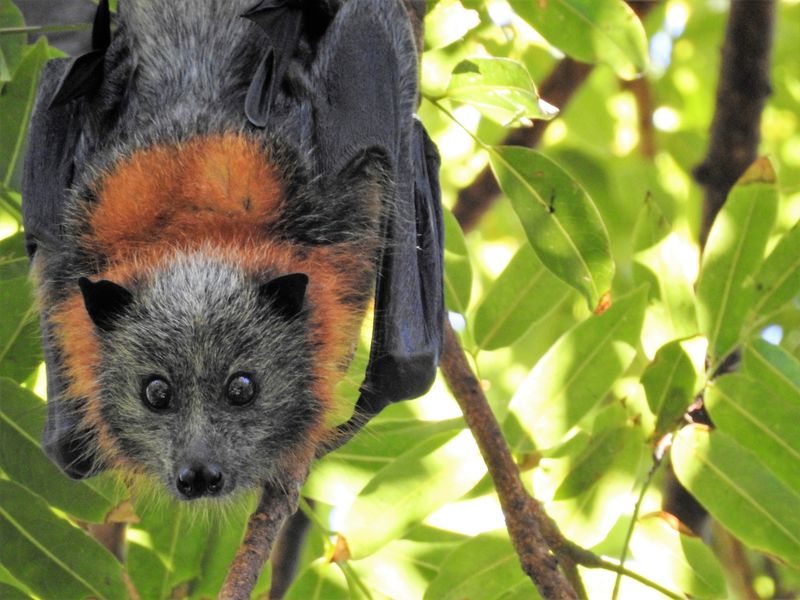
Sporting a fox-like face and wingspan approaching 5 feet, the Grey-headed Flying Fox creates quite the spectacle when colonies take flight at dusk. These Australian natives form ‘camps’ of thousands, turning trees black with their numbers.
One colony can devour tons of fruit and nectar nightly, pollinating countless plants in the process. Their distinctive gray head fur contrasts sharply with their rusty collar, making them easily recognizable among megabats.
4. India’s Fruit-Loving Giants

Soaring through Indian skies with wingspans reaching 4.5 feet, the Indian Flying Fox creates spectacular silhouettes against the setting sun. Their colonies – appropriately called “camps” – can number in the thousands, turning entire trees black!
Farmers often view them as pests, but these nocturnal giants are vital ecosystem engineers. A single bat can disperse thousands of seeds nightly, effectively planting tomorrow’s forests while satisfying their fruity cravings.
5. Africa’s Hammer-Headed Giant

With a face only a mother could love, the Hammer-headed Bat stands out with its bizarre elongated snout and lip flaps that give males their distinctive hammer appearance. These African megabats reach wingspans of nearly 3 feet!
Males produce loud honking calls that sound more like geese than bats. During mating season, they gather in “leks” where they compete for female attention through vocal performances – nature’s version of a bat karaoke contest.
6. The Pacific’s Samoan Flying Fox
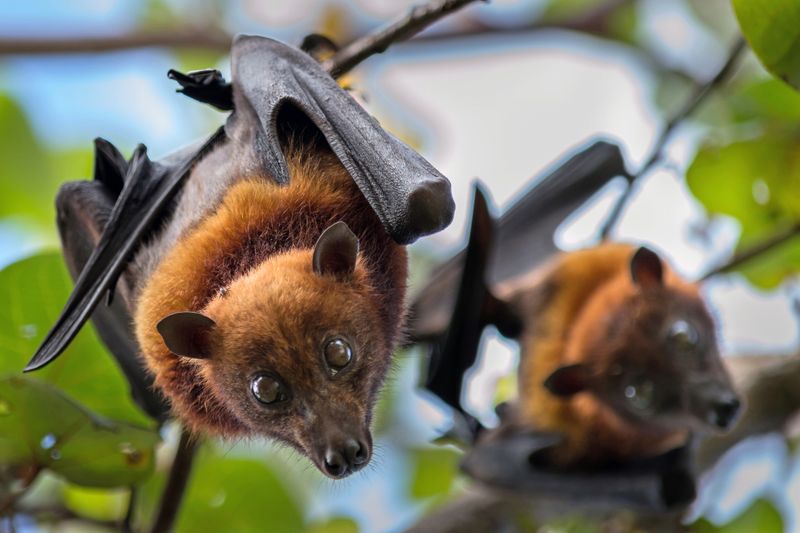
Looking like winged teddy bears, Samoan Flying Foxes boast impressive 3-foot wingspans while maintaining an oddly cute appearance. Unlike most bats, they’re often active during daylight hours, making them easier to spot than their nocturnal cousins.
Their population has dramatically declined due to hunting and hurricanes, but their daytime flying habits make them beloved symbols of the Pacific islands they call home.
7. Madagascar’s Sucker-Footed Marvel
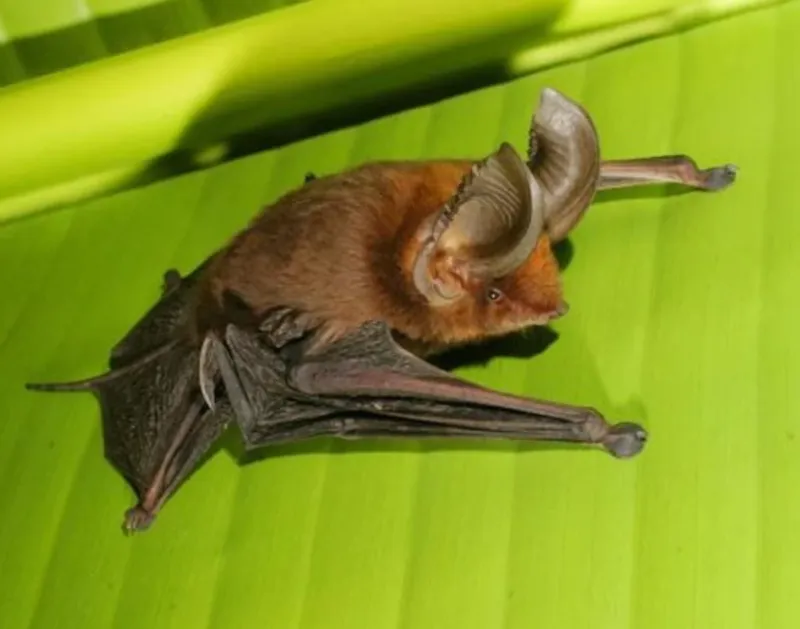
Looking like something from a sci-fi movie, the Madagascar Sucker-footed Bat uses unique adhesive organs on its wrists and ankles to stick to smooth surfaces like banana leaves. While not the largest overall, it’s the biggest in its specialized family.
Scientists were baffled for decades about how these bats cling upright to surfaces. The mystery was only solved recently – they use wet adhesion similar to tree frogs, not suction as their name suggests!
8. Central America’s White-Winged Giant
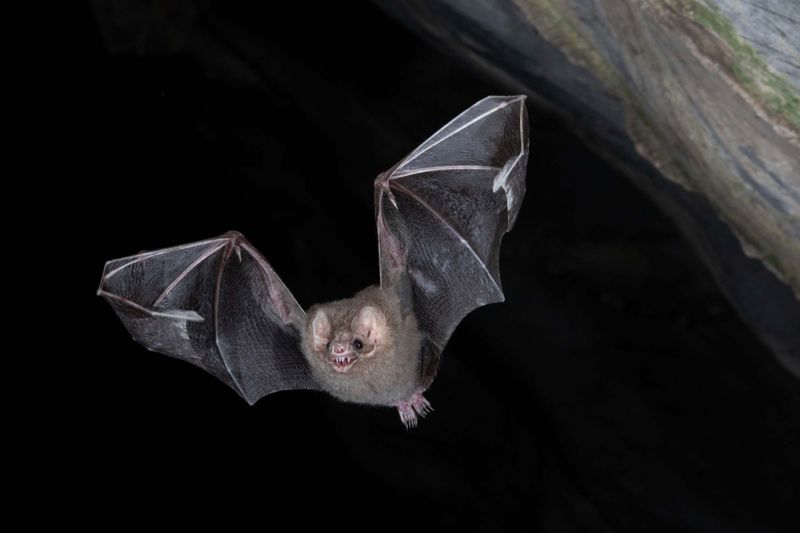
Swooping through rainforest canopies, the White-winged Vampire Bat boasts a wingspan reaching nearly 16 inches. Don’t let the name frighten you! Unlike its bloodthirsty cousins, this bat prefers feathers to blood.
These specialized hunters snip feathers from sleeping birds using razor-sharp teeth. They’re master barbers of the bat world, crafting perfect cuts that birds rarely notice.
9. New Zealand’s Extinct Sky Giant
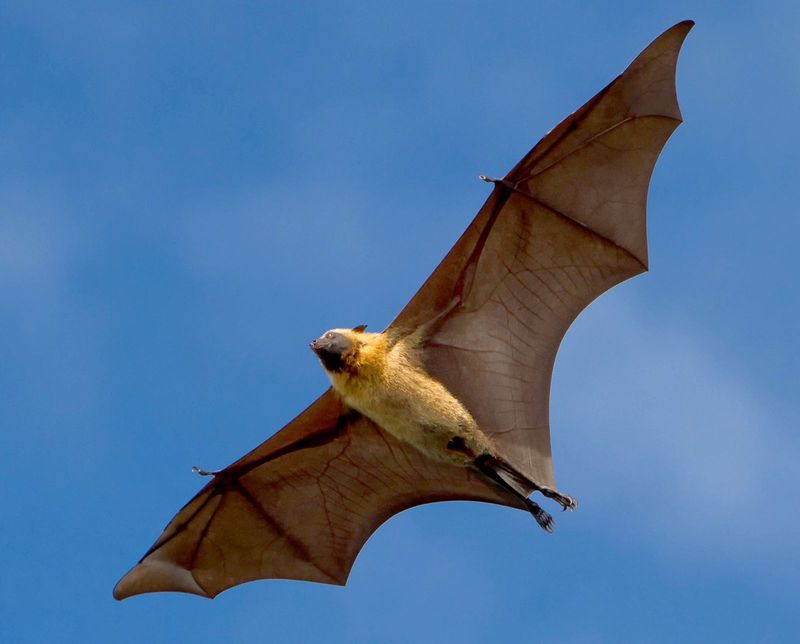
Vanished but not forgotten, the New Zealand Greater Short-tailed Bat was once the heavyweight champion of the island’s three native bat species. Weighing three times more than its surviving relatives, this unique creature was more terrestrial than airborne.
Fossil evidence shows these robust bats spent significant time hunting on the forest floor – a behavior almost unheard of in bats. Their disappearance in the 1960s marked a tragic loss to New Zealand’s biological heritage, likely due to introduced predators.
10. Southeast Asia’s Painted Beauties
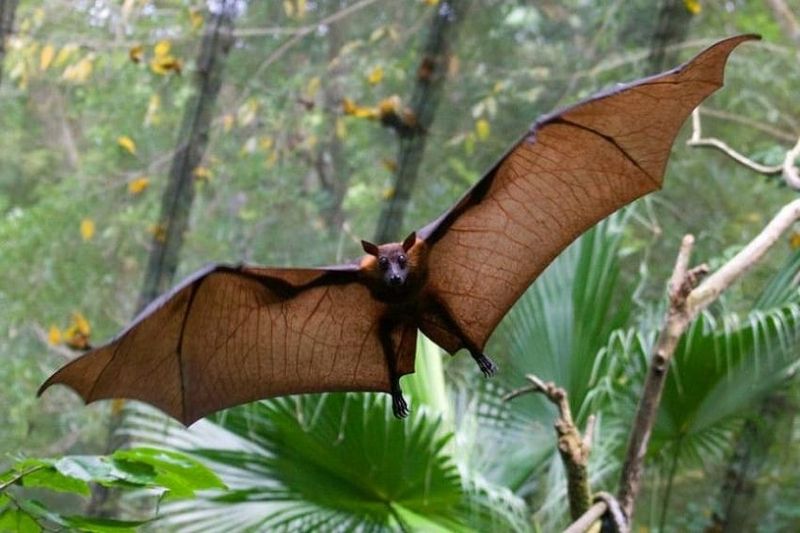
Wrapped in cloaks of orange fur with striking black wings, Painted Fruit Bats look like they’re dressed for Halloween year-round. These colorful giants of Southeast Asia can sport wingspans exceeding 3 feet – impressive flying canvases of nature.
When colonies take flight at dusk, the sky transforms into a moving tapestry of orange and black. Despite their size, they’re incredibly agile, performing aerial acrobatics that would make fighter pilots jealous.
11. South America’s Fishing Expert
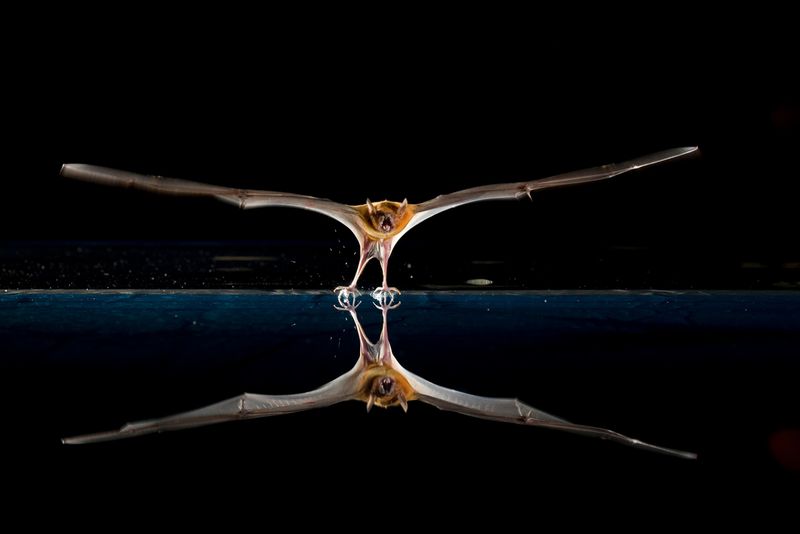
The Greater Bulldog Bat, or Fishing Bat, uses talons that rival eagles to snatch fish from water with precision. With a wingspan of 20 inches, it ranks among the largest fishing bats. Echolocation allows it to detect a fish’s fin breaking the surface from 20 feet away.
In a single night, it can capture fish weighing up to 50% of its body weight – imagine catching half your weight in fish with just your feet!
12. Borneo’s Spotted Giants
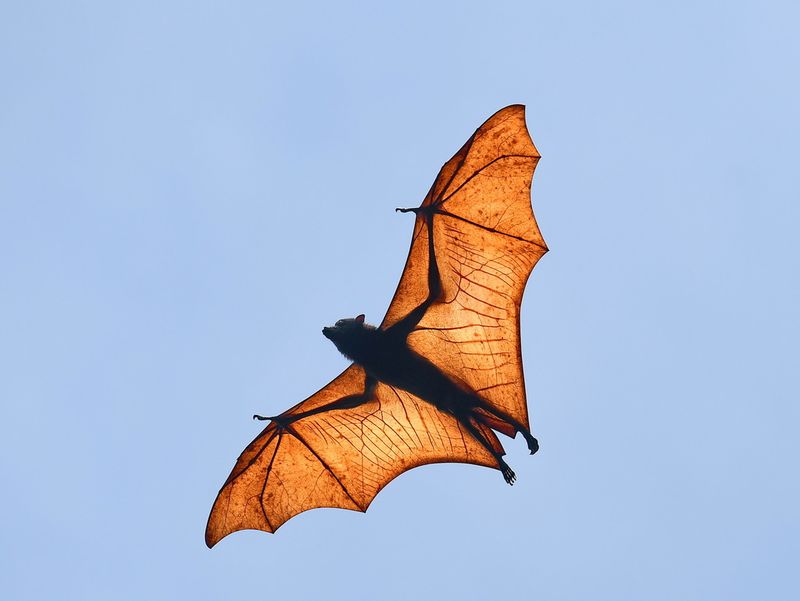
Looking like they’ve been splattered with white paint, Spotted-winged Fruit Bats cruise through Borneo’s rainforests with wingspans reaching 3 feet. Their distinctive white-spotted wings flash like signal lights through the dark canopy.
Local tribes consider sighting one a sign of good fortune. Their specialized diet includes fruits too tough for smaller bats to handle, making them crucial seed dispersers for some of the rainforest’s hardiest plants.
13. Malaysia’s Long-Tongued Nectar Lover
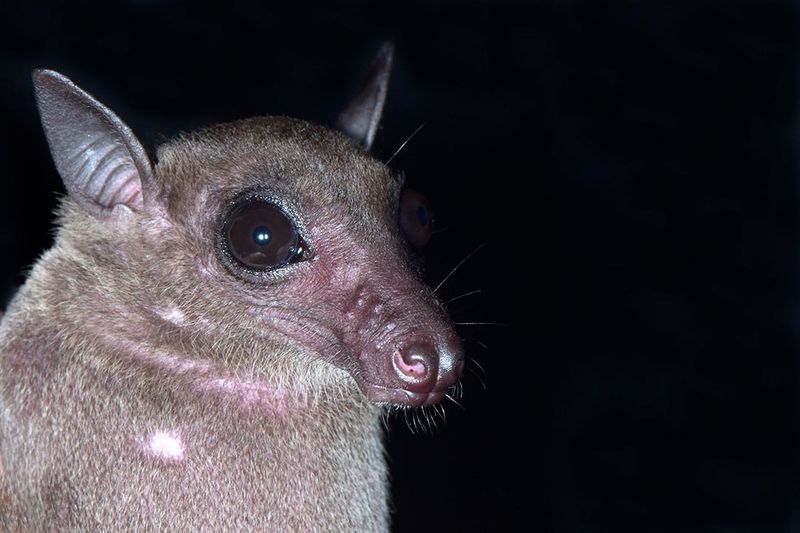
Equipped with a tongue longer than its entire body, the Greater Long-tongued Fruit Bat is nature’s perfect pollinator. Though not the largest overall at 16 inches wingspan, it’s the heavyweight champion among nectar specialists.
Their marathon-length tongues can extend over 3 inches – proportionally like a human having a 6-foot tongue! These specialized appendages allow them to reach deep into flowers other pollinators can’t access.
14. Papua New Guinea’s Tube-Nosed Wonder
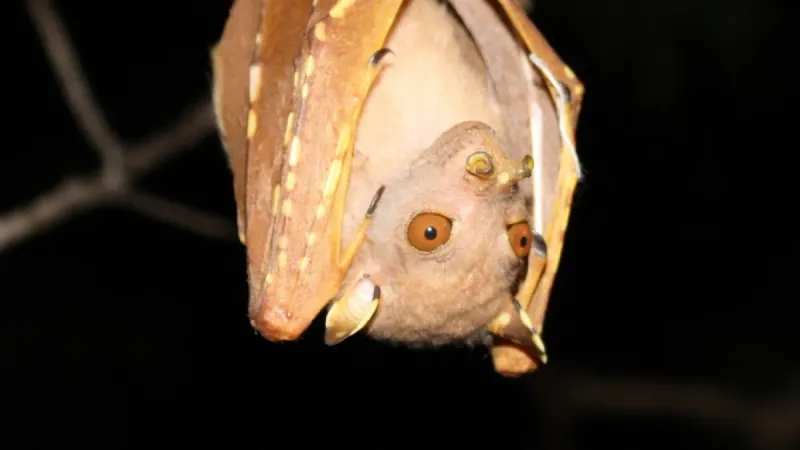
The Greater Tube-nosed Fruit Bat looks like it belongs in a science fiction movie, with nostrils resembling alien antennae. Boasting impressive 3-foot wingspans, it navigates the forests of Papua New Guinea.
Its tubular nostrils serve as scent funnels, directing fruit aromas to sensitive receptors. When hanging upside down, the tubes act as natural umbrellas, preventing rain from entering its nose while allowing easy breathing.
15. West Africa’s Yellow-Winged Marvel
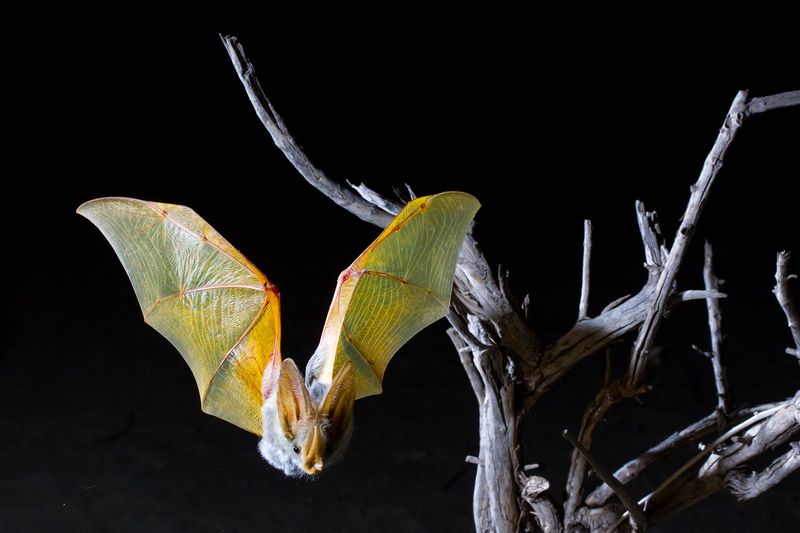
With golden wings spanning over 2.5 feet, the Yellow-winged Bat creates stunning displays in West Africa’s twilight skies. Vibrant yellow shoulder patches act as high-visibility markers, helping colony members find each other during night flights.
These bats form some of Africa’s largest colonies, sometimes exceeding 100,000 individuals. At dusk, when such massive groups take flight, the sky darkens as if storm clouds gathered, a breathtaking sight for wildlife enthusiasts.




